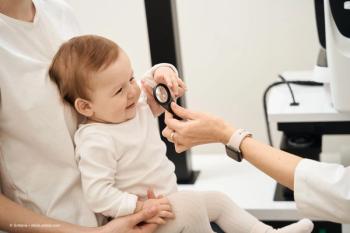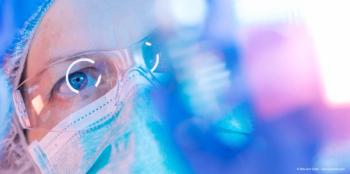
Uncovering germline mutation risk in children with unilateral retinoblastoma
Study focuses on ascertaining the risk of patients developing additional tumors
Reviewed by Carol L. Shields, MD.
The greatest likelihood of a germline mutation in patients with a unilateral retinoblastoma occurred in patients who were 1 year or younger versus those older than 1 year, as well as in a subset of patients 3 months and younger versus those between 3 and 12 months of age, according to Carol Shields, MD, chief of the Ocular Oncology Service at Wills Eye Hospital in Philadelphia, Pennsylvania.
Shields and her colleagues conducted a retrospective case series to evaluate the likelihood of germline retinoblastoma in children with solitary unilateral retinoblastoma. The goal of the study was to determine the risk of patients developing more of these tumors—that is, the risk for a germline mutation, she explained.
“It is important to know the germline status because the patients are at risk of developing multiple bilateral retinoblastomas, pinealoblastoma, and secondary cancers,” Shields said. “These can lead to blindness and death.”
Germline mutation study
The investigators retrospectively reviewed 482 consecutive patients who presented with 1 unilateral retinoblastoma and were later found to have a likely germline tumor that was defined as a family history of retinoblastoma, development of bilateral disease and/or new tumors, and the gold standard, ie, a documented germline on genetic testing, according to Shields.
A comparative analysis was then completed based on the following patient age groups: aged 0 to 1 year; 1 to 2 years; 2 to 3 years; and older than 3 years.
The results showed that in children aged 0 to 1 year who presented with 1 unilateral retinoblastoma, 29% had a germline mutation (odds ratio, 2.96). When compared with children older than 3 years, 9% had a germline mutation. This difference reached significance (P=.001).
Among children who were 12 months or younger with 1 unilateral retinoblastoma, Shields reported that in the youngest of these children (aged 0 to 3 months), 61% had a germline mutation. When these children were compared with those aged 9 to 12 months, the percentage dropped to 22% with a germline mutation. This difference was significant (P=.009).
“It is clear that the youngest children with a unilateral retinoblastoma are at the greatest risk for a germline mutation,” Shields said.
In the other age groups—aged 3 to 6 months, aged 6 to 9 months, aged 12 to 24 months, aged 24 to 36 months, and older than 36 months—the respective percentage of germline mutations was 20%, 24%, 17%, 8%, and 9%.
“Of the 482 consecutive patients with a solitary unilateral retinoblastoma who were seen on the Ocular Oncology Service at the Wills Eye Hospital, we found a significant decreasing risk for a germline mutation based on the older patient age at presentation,” Shields concluded.
Carol L. Shields, MD
E: carolshields@gmail.com
This article is adapted from Shields’ presentation at the American Academy of Ophthalmology 2021 annual meeting. This presentation received the Best Poster award. She has no financial disclosures relevant to this topic.
Newsletter
Keep your retina practice on the forefront—subscribe for expert analysis and emerging trends in retinal disease management.















































